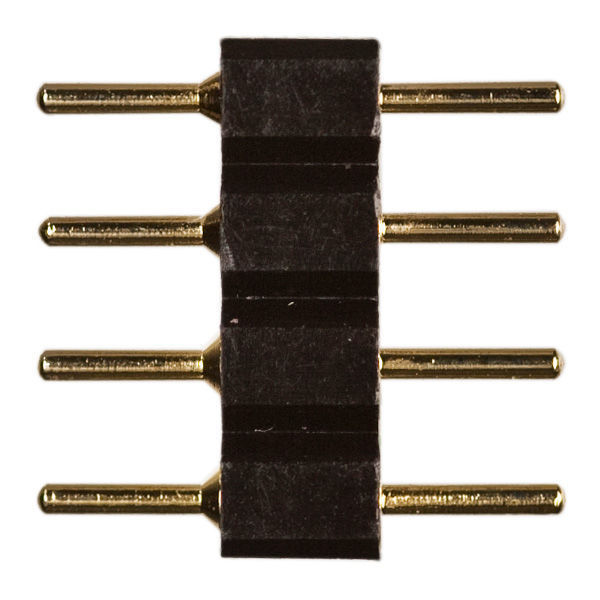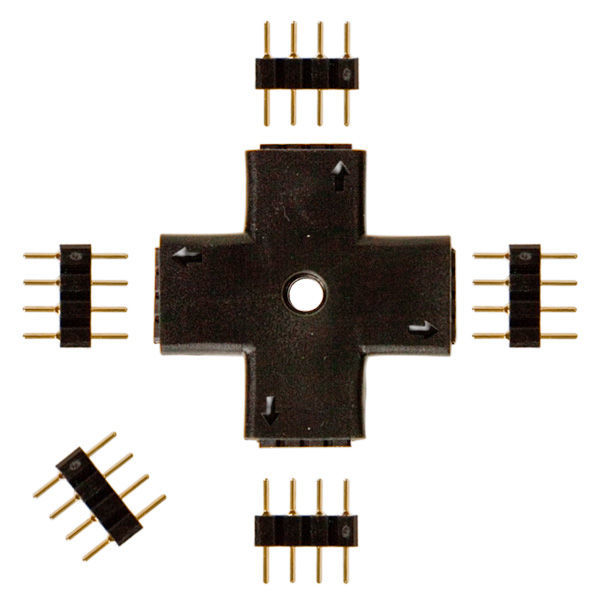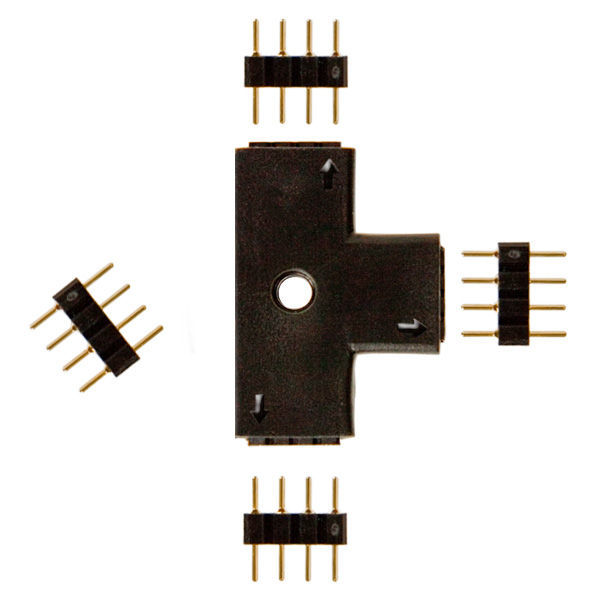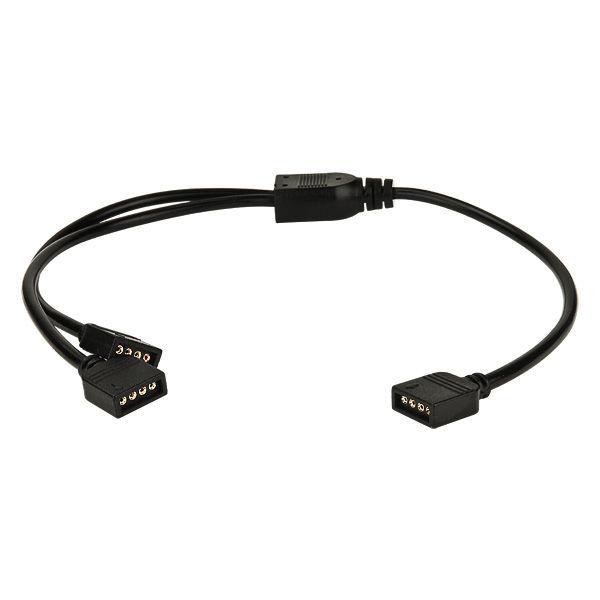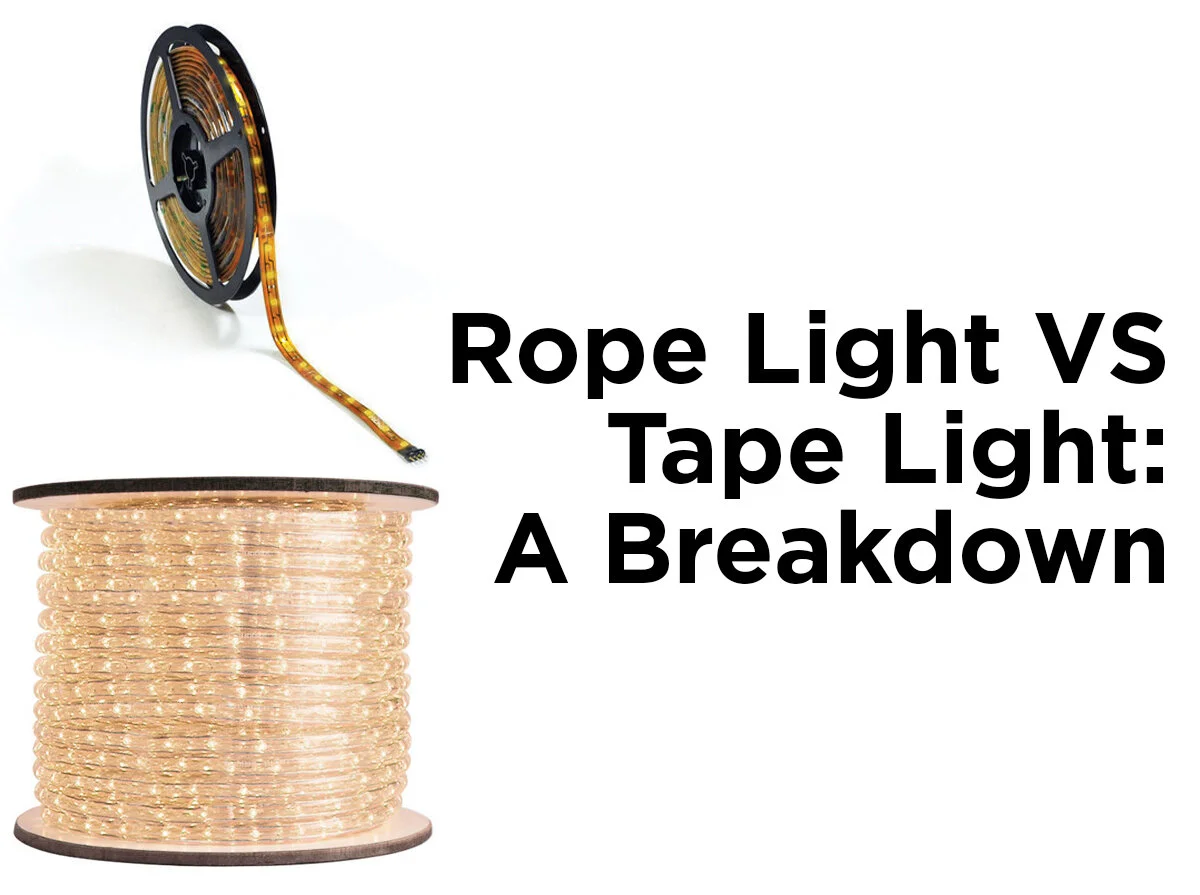Rope Light vs Strip Lights: Drivers & Installation
Now that you’ve picked the perfect rope light or LED strip lighting and compared which characteristics are right for your lighting situation, it’s time to install. Rope light and strip lights have similar equipment requirements for installation. Here’s a breakdown of everything you need and why you need it.
The LED Driver or the Step-Down Transformer
The most important part of your setup is the driver or transformer. This device acts as a manager of the power being supplied to your lighting. Both 12 and 24-Volt LED strip lights or rope lights will need an LED driver. The very low power consumption of LEDs make them incompatible with today’s transformers. You can only use a step-down transformer to manage 12 or 24-Volt incandescent rope light. The driver and the transformer both lower the high voltages of main power sources, like the American standard 120 Volts, to the needed voltage of 12 or 24 Volts. Without this device, the uncontrolled power will fry your LEDs or incandescents.
Lighting Tip: Rope light that is rated to handle 120-Volt power sources doesn’t need an LED driver or step-down transformer to operate. Just find the nearest outlet and plug it in with the, typically included, power cord.
Each driver or transformer is rated for a specific wattage range. You should pay particular attention to the maximum wattage rating to make sure your device can handle the wattage of the length of lighting you’re using. To determine how many Watts your lighting uses, you’re going to need to do a little math. Take the total length of lights you want to use and multiply that by the wattage per foot listed by the manufacturer.
Total Wattage = Length of Light (in feet) x Wattage per Foot
For example, you might buy an LED driver with a 24-Watt maximum but your 16 feet of strip lights uses 3.5 Watts per foot for a total of 56 Watts. You’re going to have to exchange that driver for a bigger one to ensure all of your lights stay lit. The amount of lights you can have in one continuous run is determined by the maximum wattage rating of your transformer or LED driver and National Electrical Code (NEC). Regardless of how powerful your driver is, the NEC can still limit the amount of lights per driver in order to prevent voltage drop from happening.
Maximum Runs of Rope or Strip Lighting
| Type | Voltage | Light Source | Maximum Run (ft.) |
|---|---|---|---|
| Rope | 12 | Incandescent (1/2-inch) | 16 |
| Rope | 12 | Incandescent (3/8-inch) | 30 |
| Rope | 120* | Incandescent | 150 |
| Rope | 12 | LED | 30 |
| Rope | 120* | LED |
150 |
| Strip | 12 or 24 | LED | 16 |
| Strip | 12 | LED (Waterproof) | 16 |
*Includes 120-Volt chasing incandescent or LED rope light
The Driver Adapter or Connector Cord
This cord connects the driver or transformer to your lights. For 12 and 24-Volt lights, there will be wires at one end for you to connect to the wires from the driver. LED drivers with smaller maximum wattages may be built like power adapters and include a plug-in cord. For that kind of driver, you can purchase a coordinating power adapter cord or connector, which will have a single pin plug to link to the driver and connector for your lights at the other end.
12 or 24-Volt strip light (left) and rope light (right) adapters
The Connectors
You can use connectors to create different lighting arrangements or to connect sections of lighting. With any connector, you need to make sure the number of pins on the connector matches the wiring or holes of your rope or strip lighting. Rope lights can be wired with up to 5 wires, while 2 or 3-wire configurations are the most common. Strip lights often have 3 or 4-pin ends and your connector must match.
| Connector Type | Use |
|---|---|
| Basic connector | Connects one section of light to the next |
| L-shaped connector | For right angles and corners |
| T-shaped connector | For 3-way splits |
| Plus-shaped connector | For intersections and 4-way splits |
| Y-splitter cord | Although this is not a connector, use this cord for 2-way splits,coming directly from the driver |
The Dimmer, the Switch, and the RGB Controller
To use an on/off switch or to dim your strip lights, you will need a controller to accomplish those effects. All devices that effect or control your lights in any way should be linked or wired before the driver or transformer. The driver should always be the closest device to the main power supply. The diagram explains how to properly connect strip lighting.
Color-changing or RGB strip lights require the same setup except in order to change the color, you need to install an RGB controller. These controllers require a 4-wire connection; one wire each for the red, green, and blue channels and one wire for the power supply.
Mounting Rope Light and Strip Lights
Rope light channel
You can mount rope light or strip lights using lighting channels made of aluminum or plastic. There are some types of strip lighting that have adhesive backing, also known as “tape light”. With that type of lighting, you can just stick the lights wherever you need it to go. If you are using waterproof strip lighting or your installation doesn’t need lots of straight sections aided by lighting channels, you can use mounting clips instead. For strip lights, you screw these clips over the lighting while rope light clips are screwed onto your chosen surface and then the rope light is snapped into place.
Lighting Tip: When removing excess lighting or replacing failed sections of rope light, it’s recommended that you use silicone glue and shrink wrap to seal off the ends or connections in addition to end caps or splice connectors.
Check out our selection of LED rope light and LED strip lights in your favorite colors for under cabinet lighting, bias lighting, cove lighting, and more. You can get more answers to your questions about basic rope or strip lighting installations if you leave a comment in the area below. You can also call our expert 1000Bulbs.com staff at 1-800-624-4488 and we’ll help you find the right products for your lighting project.





